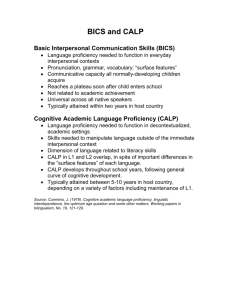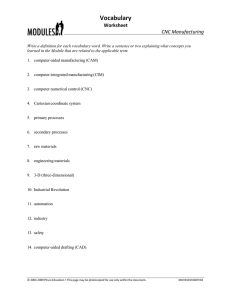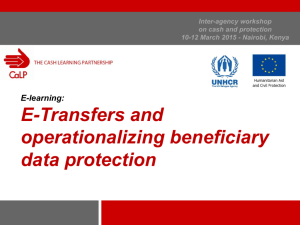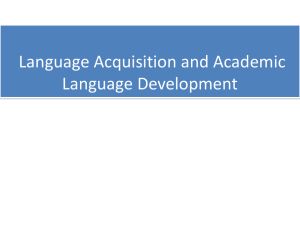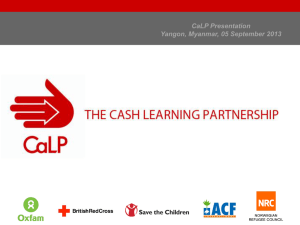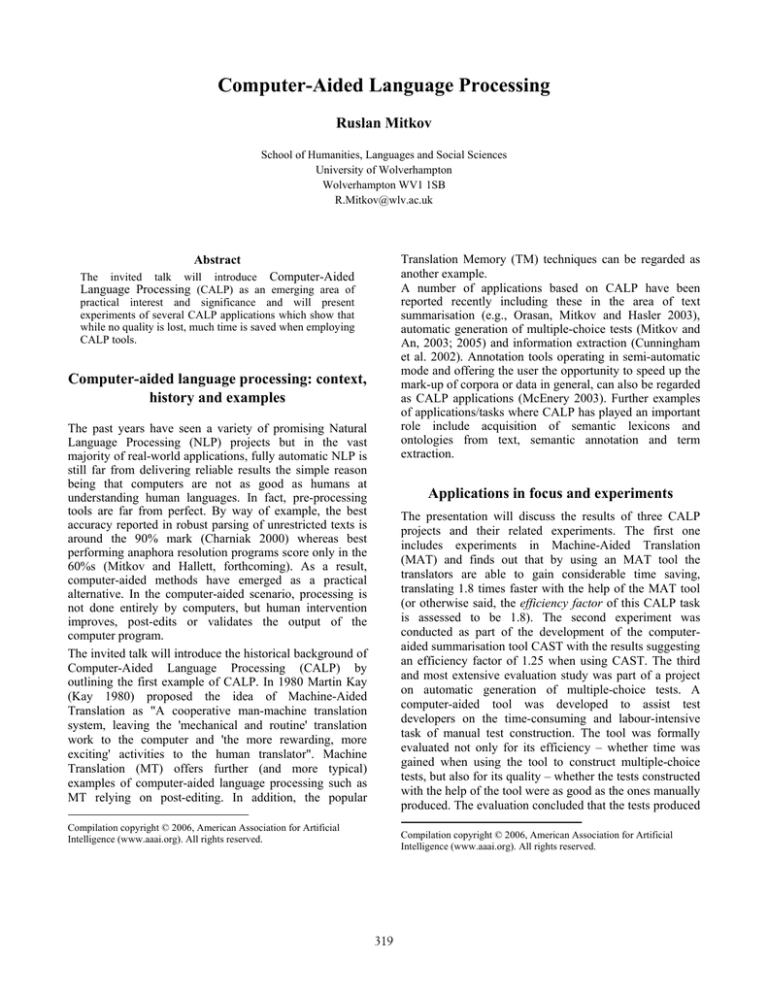
Computer-Aided Language Processing
Ruslan Mitkov
School of Humanities, Languages and Social Sciences
University of Wolverhampton
Wolverhampton WV1 1SB
R.Mitkov@wlv.ac.uk
Translation Memory (TM) techniques can be regarded as
another example.
A number of applications based on CALP have been
reported recently including these in the area of text
summarisation (e.g., Orasan, Mitkov and Hasler 2003),
automatic generation of multiple-choice tests (Mitkov and
An, 2003; 2005) and information extraction (Cunningham
et al. 2002). Annotation tools operating in semi-automatic
mode and offering the user the opportunity to speed up the
mark-up of corpora or data in general, can also be regarded
as CALP applications (McEnery 2003). Further examples
of applications/tasks where CALP has played an important
role include acquisition of semantic lexicons and
ontologies from text, semantic annotation and term
extraction.
Abstract
will introduce Computer-Aided
Language Processing (CALP) as an emerging area of
practical interest and significance and will present
experiments of several CALP applications which show that
while no quality is lost, much time is saved when employing
CALP tools.
The
invited
talk
Computer-aided language processing: context,
history and examples
The past years have seen a variety of promising Natural
Language Processing (NLP) projects but in the vast
majority of real-world applications, fully automatic NLP is
still far from delivering reliable results the simple reason
being that computers are not as good as humans at
understanding human languages. In fact, pre-processing
tools are far from perfect. By way of example, the best
accuracy reported in robust parsing of unrestricted texts is
around the 90% mark (Charniak 2000) whereas best
performing anaphora resolution programs score only in the
60%s (Mitkov and Hallett, forthcoming). As a result,
computer-aided methods have emerged as a practical
alternative. In the computer-aided scenario, processing is
not done entirely by computers, but human intervention
improves, post-edits or validates the output of the
computer program.
The invited talk will introduce the historical background of
Computer-Aided Language Processing (CALP) by
outlining the first example of CALP. In 1980 Martin Kay
(Kay 1980) proposed the idea of Machine-Aided
Translation as "A cooperative man-machine translation
system, leaving the 'mechanical and routine' translation
work to the computer and 'the more rewarding, more
exciting' activities to the human translator". Machine
Translation (MT) offers further (and more typical)
examples of computer-aided language processing such as
MT relying on post-editing. In addition, the popular
Applications in focus and experiments
The presentation will discuss the results of three CALP
projects and their related experiments. The first one
includes experiments in Machine-Aided Translation
(MAT) and finds out that by using an MAT tool the
translators are able to gain considerable time saving,
translating 1.8 times faster with the help of the MAT tool
(or otherwise said, the efficiency factor of this CALP task
is assessed to be 1.8). The second experiment was
conducted as part of the development of the computeraided summarisation tool CAST with the results suggesting
an efficiency factor of 1.25 when using CAST. The third
and most extensive evaluation study was part of a project
on automatic generation of multiple-choice tests. A
computer-aided tool was developed to assist test
developers on the time-consuming and labour-intensive
task of manual test construction. The tool was formally
evaluated not only for its efficiency – whether time was
gained when using the tool to construct multiple-choice
tests, but also for its quality – whether the tests constructed
with the help of the tool were as good as the ones manually
produced. The evaluation concluded that the tests produced
Compilation copyright © 2006, American Association for Artificial
Intelligence (www.aaai.org). All rights reserved.
Compilation copyright © 2006, American Association for Artificial
Intelligence (www.aaai.org). All rights reserved.
319
with the help of the tool were as least as good as these
produced manually and that the efficiency factor was as
high as 3.8.
Conclusions
The conclusions of the experiments show that CALP is
practical alternative of fully automatic NLP which often
fails due to the inability of the different pre-processing
programs to achieve satisfactory accuracy. The main
advantage of CALP tools is that while the quality of their
output is comparable to that of manual human input, much
efficiency is gained especially on labour-intensive and
time-consuming tasks.
Acknowledgements
Part of the reported work has been done jointly with
Constantin Orasan and Le An Ha from the Research Group
in
Computational
Linguistics,
University
of
Wolverhampton.
References
Charniak, E. (2000) "A Maximum-Entropy-Inspired
Parser". Proceedings of the Northamerican Chapter of the
Association for Computational Linguistics (NAACL-2000).
H. Cunningham, D. Maynard, K. Bontcheva, and V.
Tablan. (2002). "GATE: A Framework and Graphical
Development Environment for Robust NLP Tools and
Applications". Proceedings of the 40th Anniversary
Meeting of the Association for Computational Linguistics
(ACL-02).
Kay, M. (1980) "The Proper Place of Men and Machines in
Language Translation". Reprinted in Machine Translation
12(1): 3-23, 1997
McEnery, T. (2003) "Corpus Linguistics" In Mitkov, R.
(Ed). The Oxford Handbook of Computational Linguistics.
Oxford: Oxford University Press.
Mitkov, R. and Ha, L.A. "Computer-aided generation of
multiple-choice tests". Proceedings of the HLT/NAACL
2003 Workshop on Building educational applications using
Natural Language Processing, 17-22. Edmonton, Canada.
Mitkov R. and Hallett, C. (forthcoming). "Comparing
pronoun resolution approaches"
Orasan, C., Mitkov, R. and Hasler, L. 2003. "CAST: a
computer-aided summarisation tool". Proceedings of the
10th Conference of the European Chapter of the
Association for Computational Linguistics (EACL’03),
135-138. Budapest, Hungary.
.
320

